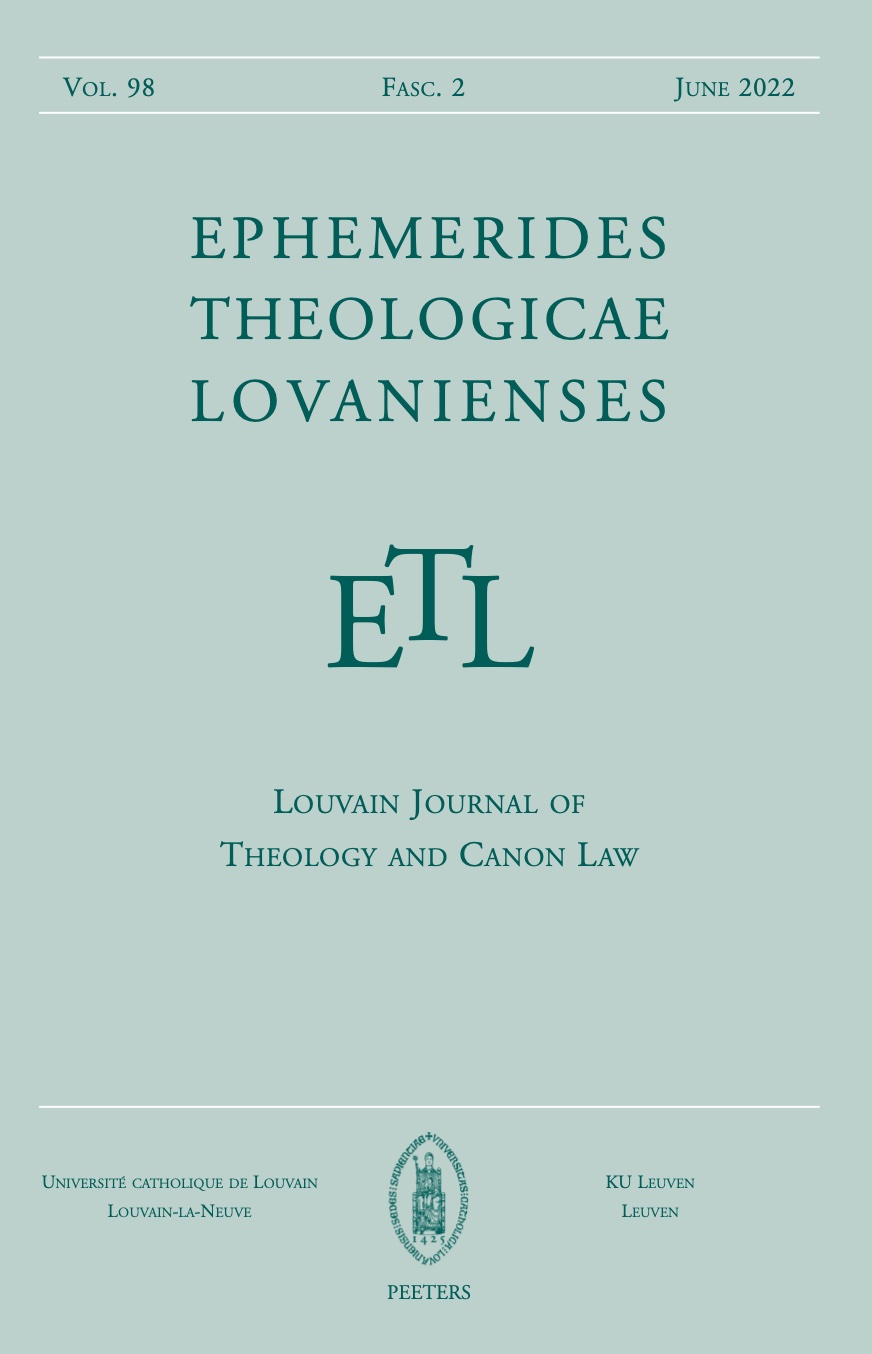 previous article in this issue previous article in this issue | next article in this issue  |

Preview first page |
Document Details : Title: Zu den religionsgeschichtilichen Hintergründen der jüdischen und christlichen Satanologie Subtitle: Eine Antwort auf John J. Collins, zugleich Sondierungen zum Verhältnis zwischen der Zwei-Geister-Lehre in 1 Q S III,13-IV,26 und dualistischen Konzepten iranischer Herkunft Author(s): DOCHHORN, Jan Journal: Ephemerides Theologicae Lovanienses Volume: 96 Issue: 2 Date: 2020 Pages: 199-260 DOI: 10.2143/ETL.96.2.3288273 Abstract : In some former contributions I have derived the Early Jewish myth about the eschatological fall of the devil (as attested by the War Scroll, the Apocalypse of Moses and the Assumption of Moses) from exegetical work on Dan 12,1. Collins has criticized this theory in an article devoted to my work on satanological traditions stating that rather a dualistic myth with Iranian backgrounds is underlying the scenario in the War Scroll. He warns about imagining revelation as a separate stream of tradition regarding it rather as human bricolage undertaken in a context where diverse cultural and religious traditions interfere. He obviously defends a paradigm according to which innovation in a religion (e.g. Judaism) is not at least prompted by external influence. Called back to a religion historical interpretation of Jewish and Christian texts by Collins I try to demonstrate in this article how interesting such research can be – and how meagre the results. Mythogenetic processes and religious innovation are far more often than by external influence incited by discourses within a religion, not at least by exegesis of authoritative tradition – in Judaism and in Iranian religion as well. Demonstrating this I present – by the way – some particular views concerning Jewish and Iranian religion, among others: 1. Jewish (and Christian) satanology is originally not dualistic. Dualistic traits tendentially emerge in satanology where Iranian religion already has disappeared as a potentially influential cultural power. One of the strongest versions of dualistic satanology is the dualism of modern exegetes who again and again denote – probably not really knowing what they do – the Devil as God’s enemy. 2. The famous dualistic passage in Yasna 30,3-6 which already Kuhn (cited by Collins) has compared with the Treatise on the Two Spirits in 1 QS III,13-IV,26 is highly debated in Gatha philology. I demonstrate that it was also debated by ancient Iranian exegetes. The standard version of Archaemenide Zoroastrianism (a dualism of Ahura Mazda and Angra Mainyu as the principles of good an evil, both being able to create) was derived from this text (cf. Yasna 57,17; Yašt 13,76) as well as the subordinate dualism propagated by Zurvanism. 3. Zurvanism is older than the Sassanides: Already Eudemos (according to Damascius) and Theopomp (according to Plutarch) attest in the 4th century BC concepts similar to the Zurvanite myth reported by Eznik of Kolb. This myth is interpreted here as being based upon exegetical work on Yasna 30,3-6. Rather than explaining the unhappiness of life (which it also does) it establishes Yašt (the liturgy) as the highest principle of the cosmic order (a concept which has parallels in the Brahmanas). 4. The reception of Iranian dualism by Plutarch and Alexander Polyhistor may indicate that Neopythagoreanism was a prominent context in which Greeks debated Iranian traditions (without being influenced considerably; they already knew what they believed they or their dualistic hero Pythagoras have received from Zoroaster). A milieu similar to Neopythagoreanism in Judaism (dualistic wisdom teachers?) could have been the context in which the author of the Treatise on the Two Spirits took up some hints of Iranian dualism. |
|


